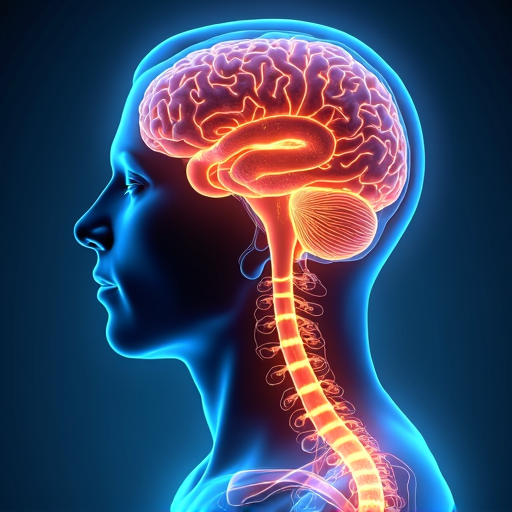Multiple sclerosis (MS) is a chronic, immune-mediated demyelinating disorder of the central nervous system (CNS), predominantly affecting young and middle-aged adults. While historically characterised by physical symptoms such as weakness, sensory disturbances, and visual impairment, cognitive dysfunction is now unequivocally recognised as a core feature of the disease, often occurring independently of physical disability. This cognitive impairment profoundly impacts quality of life, employment status, social functioning, and overall independence. This extended review synthesises contemporary scientific research to provide a comprehensive overview of the prevalence, underlying neuropathological mechanisms, neuropsychological profile, assessment methodologies, and current management strategies for cognitive impairment in MS.
Prevalence, Heterogeneity, and Cognitive Domains Affected
Cognitive impairment is a highly prevalent manifestation of MS, affecting an estimated **40% to 65%** of individuals across the disease spectrum (Benedict et al., 2020). Crucially, this prevalence is observed irrespective of disease duration or the degree of physical disability, challenging earlier assumptions that cognitive decline was solely a feature of advanced disease. The risk and severity of impairment show heterogeneity, being generally higher in progressive disease phenotypes (secondary progressive, primary progressive MS) compared to relapsing-remitting MS (RRMS), though deficits are detectable even in early RRMS and clinically isolated syndrome (CIS) (Amato et al., 2018; Rocca et al., 2015).
The cognitive profile in MS is characterised by specific domain vulnerabilities:
- Information Processing Speed (IPS): Universally identified as the most frequently and severely affected domain, considered the hallmark deficit (Rocca et al., 2015). Slowed IPS underpins difficulties in many other cognitive tasks. The Symbol Digit Modalities Test (SDMT) is the gold standard for its assessment due to its high sensitivity (Benedict et al., 2017; Van Schependom et al., 2015).
- Episodic Memory: Deficits are common, particularly affecting learning and delayed recall of new information (both verbal and visuospatial) (Chiaravalloti & DeLuca, 2008).
- Attention: Sustained, divided, and selective attention are frequently compromised, further exacerbating processing speed limitations.
- Executive Functions: This umbrella term encompasses difficulties with planning, organisation, problem-solving, abstract reasoning, cognitive flexibility, and inhibitory control (Benedict et al., 2020). Working memory, a key executive component, is also often impaired.
- Visuospatial Abilities: Less consistently affected than the core domains above, but deficits can occur, particularly in complex spatial tasks.
Underlying Pathophysiology: From Lesions to Networks
The cognitive deficits in MS are not attributable to a single pathological process but arise from the complex interplay of CNS damage:
- Focal White Matter Lesions: Demyelination and axonal transection within strategic white matter tracts disrupt communication between cortical and subcortical regions crucial for cognition (e.g., fronto-striatal, fronto-parietal, limbic pathways) (Chiaravalloti & DeLuca, 2008).
- Grey Matter Pathology: Cortical and deep grey matter atrophy (e.g., thalamus, hippocampus) is increasingly recognised as a major contributor, often correlating more strongly with cognitive decline than white matter lesion load (Rocca et al., 2015; Amato et al., 2018). Cortical demyelination (leukocortical and subpial lesions) and neuronal/axonal loss within the cortex and deep nuclei are key features.
- Network Disruption: Advanced neuroimaging techniques, particularly functional MRI (fMRI), reveal that cognitive impairment stems from **disruption of large-scale neural networks**. Reduced functional connectivity within and between critical networks, especially the default mode network (DMN), fronto-parietal network (FPN – executive control), and salience network (SN), is a consistent finding (Filippi et al., 2023). This network dysfunction reflects both the direct structural damage (lesions, atrophy) and potential compensatory mechanisms or maladaptive plasticity.
- Neuroinflammation: Chronic inflammation, including meningeal inflammation adjacent to the cortex, is implicated in driving grey matter pathology and neurodegeneration, contributing to cognitive decline.
Neuropsychological Profile and Comprehensive Assessment
The cognitive profile in MS is typically classified as “subcortical”, distinct from the “cortical” dementia pattern of Alzheimer’s disease. Key characteristics include:
* Memory: Deficits primarily involve retrieval (difficulty accessing stored information) rather than encoding or storage per se. Cued recall often significantly improves performance compared to free recall (Chiaravalloti & DeLuca, 2008).
* Executive Function: Impaired cognitive flexibility (set-shifting), problem-solving, and abstract reasoning are common. Verbal fluency (especially phonemic) is often reduced.
* Aphasia/Apraxia/Agnosia: True cortical deficits like significant aphasia, apraxia, or agnosia are rare, reinforcing the subcortical pattern (Benedict et al., 2020).
Assessment requires a multifaceted approach
Screening: The Brief International Cognitive Assessment for MS (BICAMS) is the internationally recommended screening tool. It assesses IPS (SDMT), verbal memory (California Verbal Learning Test-II – CVLT-II), and visuospatial memory (Brief Visuospatial Memory Test-Revised – BVMT-R), offering a balance of sensitivity, specificity, brevity (~15 minutes), and international validation (Langdon et al., 2012).
Comprehensive Neuropsychological Assessment: When screening indicates impairment or for detailed characterisation, a more comprehensive battery is essential. The Minimal Assessment of Cognitive Function in MS (MACFIMS), while longer, provides a broader evaluation of all key domains (Strober et al., 2014). This in-depth assessment is crucial for diagnosis, rehabilitation planning, and monitoring progression
Considerations: Assessment must account for confounding factors significantly impacting performance in MS, including fatigue (often worse later in the day), depression, anxiety, pain, and medication side effects. Testing should ideally be scheduled during peak energy times and mood should be evaluated concurrently (Strober et al., 2014).
Profound Impact and Evolving Management Strategies
The consequences of cognitive impairment in MS are far-reaching
Employment: Strongly associated with unemployment and reduced work capacity (Van Schependom et al., 2015)
Activities of Daily Living (ADLs): Impacts instrumental ADLs (e.g., driving, managing finances, medication adherence) and basic ADLs, reducing independence
Social Functioning: Strains interpersonal relationships, social participation, and communication
Quality of Life (QoL): Significantly diminishes overall QoL, often more so than physical disability (Amato et al., 2018)
Early Manifestation: Critically, cognitive changes can be detectable at disease onset or in CIS, highlighting the need for early screening and intervention (Benedict et al., 2020).
Management remains challenging but evolving:
- Disease-Modifying Therapies (DMTs): While primarily targeting relapse reduction and disability progression, evidence suggests some higher-efficacy DMTs *may* have a modest beneficial effect on slowing cognitive decline, particularly by reducing inflammatory activity and lesion accrual impacting networks (Amato et al., 2018). However, no DMT is approved specifically for cognitive impairment, and effects are often partial and variable.
- Symptomatic Pharmacotherapy: Currently, no medications have robust, consistent evidence for significantly improving cognitive function in MS. Cholinesterase inhibitors (e.g., donepezil) and stimulants (e.g., methylphenidate) have shown mixed results in trials, often with limited efficacy or tolerability issues (Messinis et al., 2020).
- Cognitive Rehabilitation (CR): This is the cornerstone of non-pharmacological management. Evidence supports the efficacy of compensatory strategy training (e.g., using planners, memory aids) and, increasingly, restorative approaches targeting specific domains like memory and IPS, often using computer-based programmes. CR is most effective when individualised, intensive, and potentially combined with aerobic exercise. Benefits are typically modest but clinically meaningful for daily functioning (Messinis et al., 2020; Benedict et al., 2020).
- Management of Comorbidities: Aggressively addressing fatigue, depression, anxiety, sleep disorders, and pain is paramount. Effective management of these symptoms can significantly improve cognitive performance and perceived cognitive difficulties (Strober et al., 2014).
- Lifestyle Modifications: Promoting cardiovascular health (diet, exercise), cognitive reserve building (lifelong learning, engaging activities), and stress reduction may offer protective benefits, although direct evidence in MS is still accumulating (Benedict et al., 2020).
Conclusion and Future Directions
Cognitive impairment is a prevalent, debilitating, and often under-recognised consequence of MS, with profound implications extending far beyond physical limitations. Advances in neuroimaging have illuminated the complex pathophysiology, implicating widespread grey matter pathology, strategic white matter damage, and large-scale neural network disruption as key substrates. Standardised assessment tools like BICAMS facilitate early identification and monitoring in clinical practice.
While significant challenges remain in management, particularly regarding effective pharmacotherapy, cognitive rehabilitation offers tangible benefits. Future research priorities include: elucidating the precise mechanisms linking inflammation to grey matter damage and cognitive decline; developing more sensitive and specific biomarkers for cognitive progression; conducting larger, longer-term trials of promising pharmacological agents; refining and personalising cognitive rehabilitation protocols (potentially incorporating neuromodulation); and exploring the protective role of cognitive reserve and lifestyle factors. Addressing cognitive impairment proactively through early detection, comprehensive management, and ongoing research is essential for improving the holistic care and quality of life for individuals living with MS.
References
Amato, M. P., Goretti, B., & Portaccio, E. (2018). Cognitive impairment in multiple sclerosis. *The Lancet Neurology, 17(12), 1073–1086.
Benedict, R. H. B., Amato, M. P., & Boringa, J. (2017). Brief International Cognitive Assessment for MS (BICAMS): International standards for validation. *BMC Neurology, 17, 21.
Benedict, R. H. B., DeLuca, J., Enzinger, C., Geurts, J. J. G., Krupp, L. B., Rao, S. M., & Cognition Working Group of the MS International Federation. (2020). Recommendations for diagnosis and management of cognitive dysfunction in multiple sclerosis. *The Lancet Neurology, 19(10), 860–871.
Chiaravalloti, N. D., & DeLuca, J. (2008). Cognitive impairment in multiple sclerosis. *The Lancet Neurology, 7(12), 1139–1151. https://doi.org/10.1016/S1474-4422(08)70259-X
Filippi, M., Riccitelli, G. C., Mattavelli, D., Colombo, B., Rodegher, M., & Rocca, M. A. (2023). Neuroimaging insights into cognitive dysfunction in multiple sclerosis. Nature Reviews Neurology, 19, 515–528.
Langdon, D. W., Amato, M. P., Boringa, J., Brochet, B., Foley, F., Fredrikson, S., … & Benedict, R. H. B. (2012). Recommendations for a brief international cognitive assessment for multiple sclerosis (BICAMS). Multiple Sclerosis Journal, 18(6), 891–898.
Messinis, L., Kosmidis, M. H., & Papathanasopoulos, P. (2020). Treatment of cognitive dysfunction in multiple sclerosis: Recent developments, challenges and future directions. Brain Sciences, 10(3), 173.
Rocca, M. A., Amato, M. P., De Stefano, N., Enzinger, C., Geurts, J. J., Penner, I. K., … & Filippi, M. (2015). Clinical and imaging assessment of cognitive dysfunction in multiple sclerosis. The Lancet Neurology, 14(3), 302–317.
Strober, L., Englert, J., Munschauer, F., Smith, J., & Rao, S. (2014). Sensitivity of conventional memory tests in multiple sclerosis: Comparing the MACFIMS and BICAMS batteries. Cognitive and Behavioral Neurology, 27(3), 102–112.
Van Schependom, J., D’hooghe, M. B., Cleynhens, K., D’hooghe, T., De Deyn, P. P., Nagels, G., & Nagels, G. (2015). The Symbol Digit Modalities Test as sentinel test for cognitive impairment in multiple sclerosis. European Neurology, 74(1–2), 32–39.

I am an experimental psychologist and cognitive neuroscientist, working as a PhD researcher in the Centre for Cognition, Computation and Modelling at Birkbeck, University of London. My work investigates the architecture of working memory, how our highest cognitive functions develop and change across the lifespan, and the design of interventions to support cognitive health, particularly in ageing.
My professional foundation in psychology and cognitive neuroscience is built upon over fifteen years of continuous, hands-on research and applied practice. This extensive trajectory is formally validated by a portfolio of over 245 accredited Continuing Professional Development and Continuing Medical Education certificates, reflecting a sustained and profound dedication to expertise.
My work is defined by established, evidence-based concentrations in complex, high-impact areas:
-
Clinical & Neurocognitive Health: My advanced expertise encompasses the neuroscience and clinical management of degenerative diseases such as Alzheimer's, Parkinson's, and Multiple Sclerosis, alongside neurodevelopmental conditions including ADHD and Autism. I also maintain a command of trauma-informed care, epilepsy, sleep disorders, schizophrenia, and substance use disorders.
-
Women's Mental Health & Lifespan Care: A core area of my practice focuses on women's mental health, with in-depth knowledge of disorders where biological and psychological health intersect. This includes specialised proficiency in perinatal and postpartum mental health, perimenopausal and menopausal mood disorders, the psychological impact of polycystic ovary syndrome (PCOS) and endometriosis, and the mental health dimensions of breast cancer and cardiovascular disease.
-
Intervention, Innovation & Cognitive Healthspan: My concentration is in designing both cognitive rehabilitation strategies and evidence-based programmes for healthy cognitive ageing. This involves the applied use and governance of AI in healthcare, machine learning for health equity, gamification in treatment, and deploying integrated telehealth platforms to support cognitive vitality across the lifespan.
-
Inclusive Practice & Scientific Leadership: My work is grounded in expert knowledge of mental health leadership, team-based care models, and the psychology of influence. It is further informed by advanced, practical training in diversity, equity, and inclusion—with a particular focus on LGBTQ+ health, mitigating unconscious bias, and providing culturally integrated care—all governed by a rigorous framework of research ethics and science communication.
Outside of academic research, I design and build proprietary digital tools for cognitive intervention. This work is the foundation of NeuxScience, a Software-as-a-Service (SaaS) platform that I architected and developed. The system leverages my own machine learning models and data science pipelines to deliver personalised, adaptive cognitive training by integrating my research on higher order cognitive functions directly into the platform's core logic.
I am committed to making the science of the mind clear and useful. Through my writing, I aim to educate, share evidence, and show how research in cognition and brain health can be applied in everyday, meaningful ways.
In my life beyond work, I am a mother and wife, managing a very full home with three boys, four dogs, and five cats.



